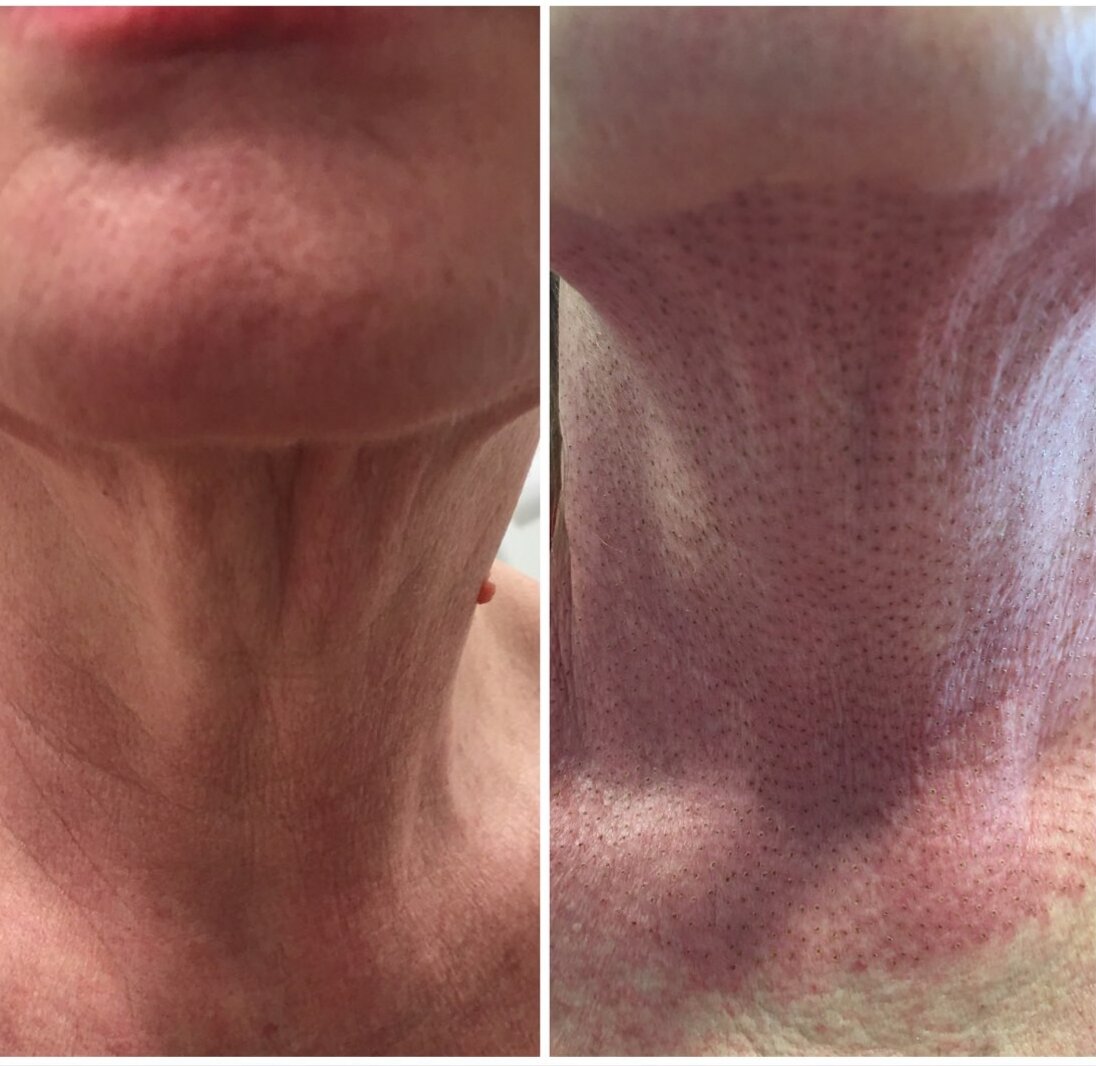Fibroblast Skin Tightening
Fibroblast Plasma Skin Tightening treatment is a completely revolutionary method that offers perfect facial rejuvenation. It is important to emphasize that Fibroblast Skin Tightening is a non-invasive technique in which no concussion or any other surgical instrument is used.
Plasma Skin Tightening is a non surgical cosmetic enhancement designed to shrink the skin using a sterile, disposable probe called “plasma pen”, which is used to produce plasma waves. The waves are directed as tiny light spots along the wrinkle lines. The tip of the pen never touches the skin (and the needle like attachment is a sterile, disposable, one-time use product).
The pen is held above the skin and a tiny plasma arc connects the tip of the device to the surface of the skin. Using plasma waves, the old collagen is removed by sublimation (evaporation), and fibroblasts are stimulated to produce new collagen. The targeted skin contracts and is essentially eliminated without any cutting, which results in the tightening and shrinking of the targeted skin.
This advanced procedure helps to revive natural levels of collagen, hyaluronic acid and fibronectin needed for fresh youthful skin. A series of tiny brown spots are strategically placed to attain the desired result. The skin around the dot tightens instantly, pulling the cells closer together.
ADVANTAGES VS. SURGERY
No cutting of skin
No stitches required
Very low risk procedure
Minimal side effects and far less downtime
No risk of blindness as there is with surgery
No thinning of the skin
Significant cost saving
TOTAL AREA OF APPLICATIONS
- Surgical Blepharoplasty
- Wrinkle Reduction
- Senile Angiomas
- Flat Warts
- Telangiectasia
- Soft Fibroids
- Stretch Marks
- Common Warts
- Skin Tightening
- Skin Tags
- Seborrheic Warts
- Angiokeratomas
- Xanthelasma
- Seborrheic Keratosis
- Keratosis Actinica
- Capillary Nevi
- Lentigos
- Keratoacanthomas
- Molluscum Contagiosum
- Filiform Warts
- Nevus Araneus
- Keratosis
- Melasma
- Scar Correction
The Procedure
Preparation +
During +
After +
Results +
FAQs
Does it Last? +
Am I a good candidate? +
How long does the area take to heal? +
Will I need multiple treatments? +
How will my skin look like after the procedure? +
General Contraindications and Reasons Not to Get the Procedure
Current or history of cancer, especially malignant melanoma or recurrent non-melanoma skin cancer, or pre-cancerous lesions or after recovery from cancer till off medication for 6 months and have GP approval prior to commencing treatment
Any active infection
Diseases such as a history of recurrent Herpes Simplex, Systemic Lupus Erythematous or Porphyria
Use of photosensitive medication, and/or herbs that may cause sensitivity to such as, tetracycline or St. John’s Wart
Immunosuppressive diseases including AIDS and HIV infection or use of immunosuppressive medications
Diabetes unless under control
History of bleeding coagulopathies or use of anticoagulants
History of keloid scarring
A history of heart disease (Angina, heart pacemaker, taking anti-coagulant drugs)
Use of oral or topical Roaccutane or Retin A, vitamin A or other such products in the previous 3 months for the treatment of acne or other dermatological conditions
Surgery in the past 6 months
Alcohol or Drug Abuse
Deep bruising
Fever
High or low blood pressure
Liver disease and/or any medication that affects the liver function
Metal implants/plates or pins
Open wounds/ulcers/sores (on treatment area)
Phlebitis
Poor circulation (blood and lymph)
Pregnancy or breast feeding patients
Recent scarring to treatment area
Skin disorders
Thrombosis
Thyroid disease or other hormonal disorders
Under 18 years of age
















